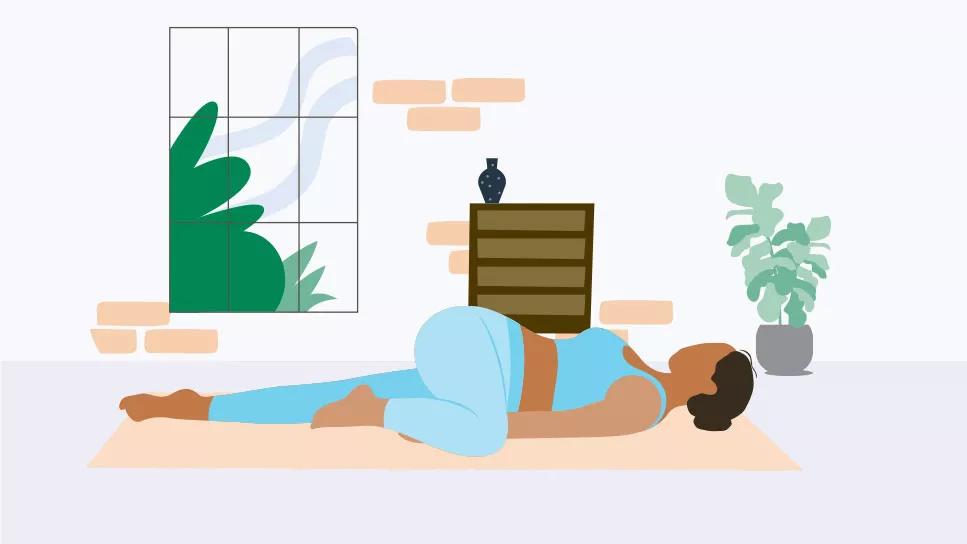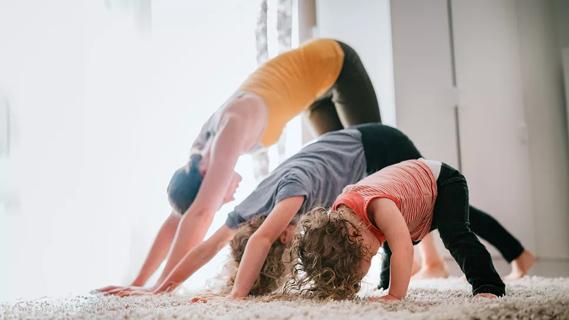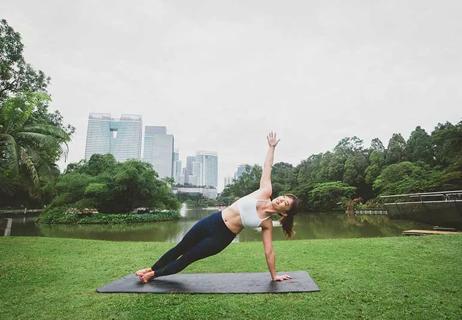This mindful practice is designed to give you mental and physical relaxation

Yoga is a practice that offers benefits for your mind, body and spirit. Most styles of yoga focus on mindfully syncing your movement to your breath, encouraging you to calm your thoughts, focusing on your breath and releasing tension in your body.
Advertisement
Cleveland Clinic is a non-profit academic medical center. Advertising on our site helps support our mission. We do not endorse non-Cleveland Clinic products or services. Policy
In its many forms, yoga offers various benefits related to:
In the physical practice of yoga, as your body gains strength and flexibility, you can try increasingly more difficult poses and flows.
But yoga isn’t just about the ability to do a headstand. Restorative yoga, in particular, focuses your mind through practice geared to helping you find a way to be more present in the moment. It effectively slows everything down so you can sit within your body comfortably without judgment and embrace a heightened sense of self-awareness.
Yoga instructor Brittany Teems, E-RYT 200, explains further how restorative yoga works differently from other yoga practices, and provides ways you can weave it into your daily routine.
Restorative yoga is designed to give you a period of complete mental and physical relaxation. Rather than move quickly from one pose to the next (like your traditional vinyasa flow) or through a series of repetitive motions (like sun salutations), restorative yoga sessions are built around fewer yoga poses that you hold for five to 10 minutes at a time or longer. The goal is to deepen your stretch, clear your mind and sink into your body while you focus on your breath.
Advertisement
“It gives you the ability to consciously relax, and it’s a very meditative practice,” notes Teems. “There should be no discomfort in your poses. You’re not trying to push your limits and make it so your body tightens. Instead, you’re focusing more on mindfulness, staying in the present moment and letting your body remain still.”
You could even think of restorative yoga as active relaxation. As you sit or lie in each pose, you’re encouraged to use props like bolsters, blankets and pillows, to support your knees, neck and lower back. This provides comfort while you’re deepening your stretch through your poses. Classes often play soft sounds or melodic background music to help lull you into a sense of peace. In some sessions, you may be offered an eye covering to reduce visual distractions, along with low-level lighting for your comfort.
“Some people use eye covers or weighted blankets to help them sink into their stretches and allow their bodies to just be still,” says Teems. “By using all of the different accessible tools like pillows and blankets, it helps you relax into a pose for five to 10 minutes. Sometimes, you’re left in disbelief it’s been that long when you’re done.”
Restorative yoga centers your parasympathetic nervous system — a network of nerves that relaxes your body after periods of stress or danger. Unlike your sympathetic nervous system, which triggers your body’s fight-or-flight response, your parasympathetic nervous system helps you recover quicker and recharge after having stressful experiences.
“When we’re constantly overwhelmed with stressors in life — when you have depression or anxiety or anger — your body responds to those stressors,” explains Teems. “Restorative yoga takes that stress, brings it to your awareness, and helps you let go of it (even if only for a short time).”
Because restorative yoga is a forced slow-down and puts your physical body on pause, regular ongoing practice can have a positive long-lasting impact by:
“It also reduces some of that internal mental chatter we all have,” Teems adds.
Restorative yoga can certainly be beneficial if you experience any of the following:
And because studies show there’s a mind-body connection, we know that low-impact physical exercises and mindful practices like yoga can have a significant impact on your overall well-being. That’s especially true if you’re going through treatment or recovering from conditions like cancer.
A 2018 study compared the effects of a 12-week restorative yoga program against a 12-week vigorous yoga program for adults with histories of Stage 0–3 breast cancer or ovarian cancer. This study showed that people who completed cancer treatment and were sedentary — having engaged in fewer than 90 minutes of moderate-intensity exercise for at least two months and fewer than 30 minutes per month of high-intensity physical activity — were able to stick with a long-term regular yoga regimen when it was restorative.
Advertisement
Another study from 2022 showed that women who were sedentary and had completed treatment for breast or ovarian cancers had improved fluid cognitive function after 24 weeks of restorative yoga compared to vigorous yoga — meaning they could process information and solve problems more efficiently.
And in 2023, even third-year medical students who participated in a 45-minute restorative yoga session once a week for six weeks were found to be more relaxed with improved self-esteem and the ability to think clearly.
Teems highly recommends taking a couple of restorative yoga classes to get the basics down before doing restorative yoga at home.
“You want to set yourself up in a way that is as comfortable and relaxing as the instructor can guide you to become,” she advises. “Once you know how to do it, you can try it first thing in the morning to set your day up for a positive direction. You can do it at night to wind down and get ready for peaceful sleep. Or you can do it after a strenuous exercise to release any tension in your muscles and reduce soreness in the future.”
Signing up for a full class can offer some much-needed self-care through practicing stillness and breathing. But once you get the hang of it, you can even do restorative yoga as part of your daily exercise snacks between meetings and other responsibilities.
Advertisement
Other helpful tips include setting a five-minute or 10-minute soft timer for each pose you hold. That way, you don’t get so comfortable in the beginning that you fall asleep — and if you do, that’s OK, too! Listen to your body.
“For beginners, the challenge is about staying awake, being present and not letting the past or future influence how you invest your energy or what you’re thinking,” notes Teems.
Finding what works best for you is key. Some of the poses you can expect to hold in restorative yoga include:
Advertisement
“The most important thing to take from restorative yoga is a gentle, conscious relaxation,” advises Teems. “You want to start by doing this whenever you feel stressed, maybe once a day, a week or a month.
“Start with 20 to 30 minutes at a time just to see how this practice fits into the rest of your day and how the energy you put into it gives back. From there, allow for longer practices as you’re able to release more deeply and increase your concentration.”
Remember: Restorative yoga is more about meeting yourself where you are without judgment of any kind. You want to release any expectation of how you think it should go because each day will be different. You’ll be faced with varying emotions depending on what’s going on in your world. And all you do is acknowledge it and allow it to pass.
“If you’ve got a lot of stress in your life, remember you’re not alone,” encourages Teems. “You’re going to have days where it might be difficult to connect to your body. When that happens, be patient with yourself and give yourself that same grace you give to your friends or your loved ones. Everyone deserves self-care and recovery.”
Learn more about our editorial process.
Advertisement

This gentle yoga stretch supports your spine, strengthens your core and calms your mind

Focus on inhaling and exhaling through 12 steps of a complete sequence

Stand tall and feel grounded with this foundational yoga pose

This transitional and restorative yoga pose provides a full-body stretch

Somatic yoga focuses on the sensation and experience of movement — not striking perfect poses

Balasana, or child’s pose, is a restorative full-body yoga technique

Kids’ yoga can help kiddos become more aware of their physical, mental and emotional selves

You can work more than your abdominals

The best parenting style balances enforcing rules and showing plenty of love

Tips include cutting back on sugar, focusing on exercise and managing stress

It can be harder to let go when you’ve invested time, energy and emotions — but it might be the healthier choice long term